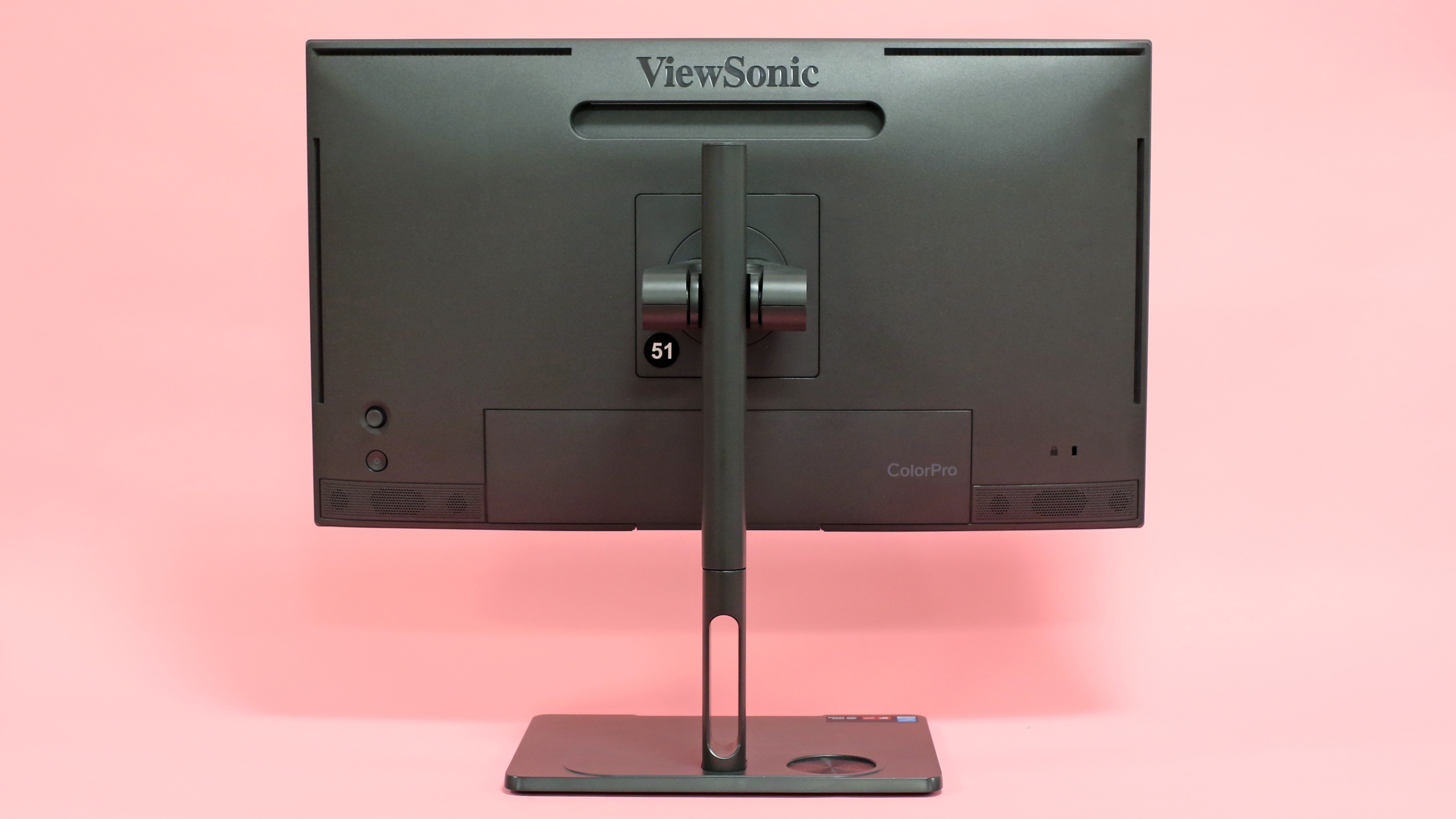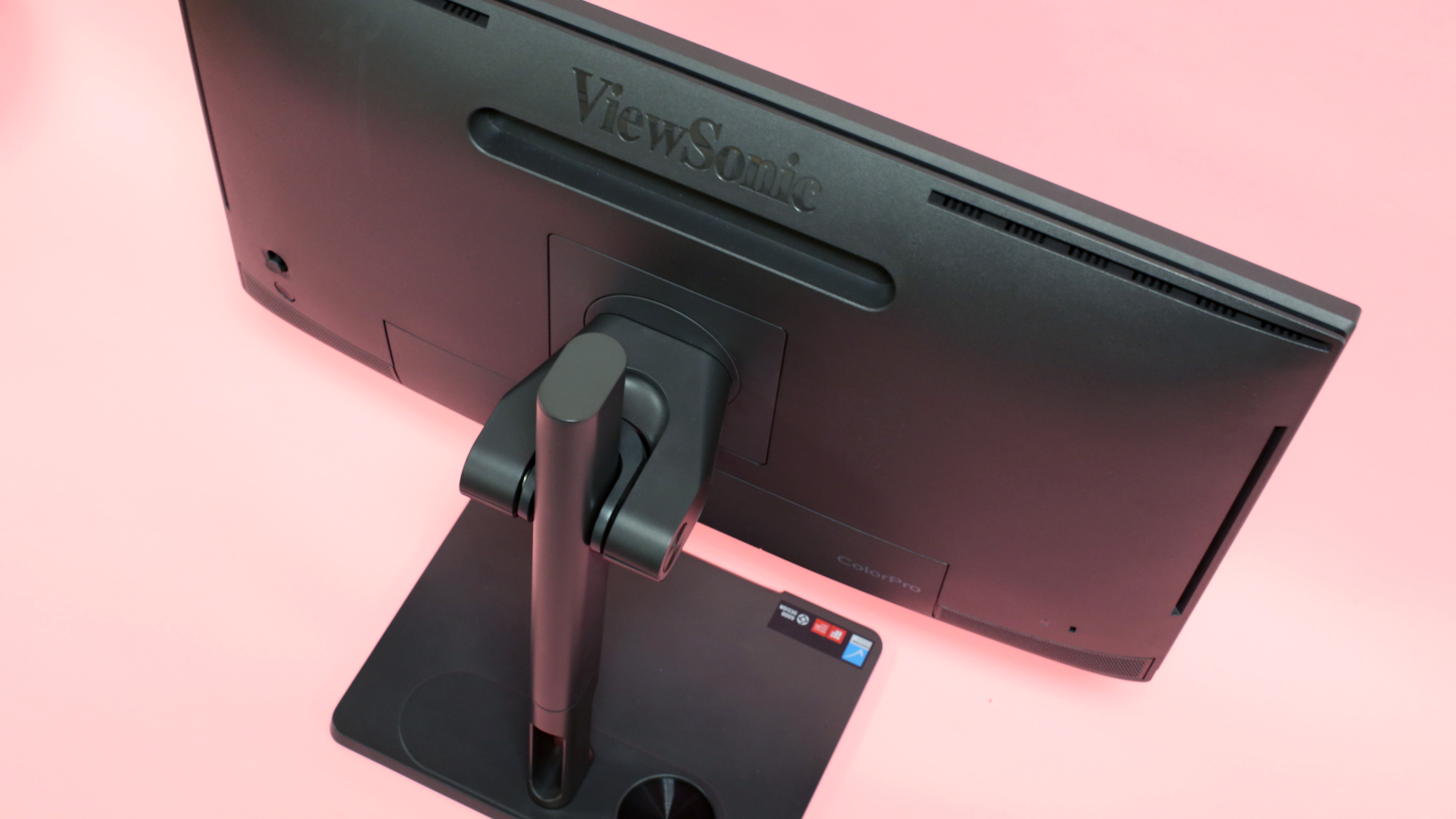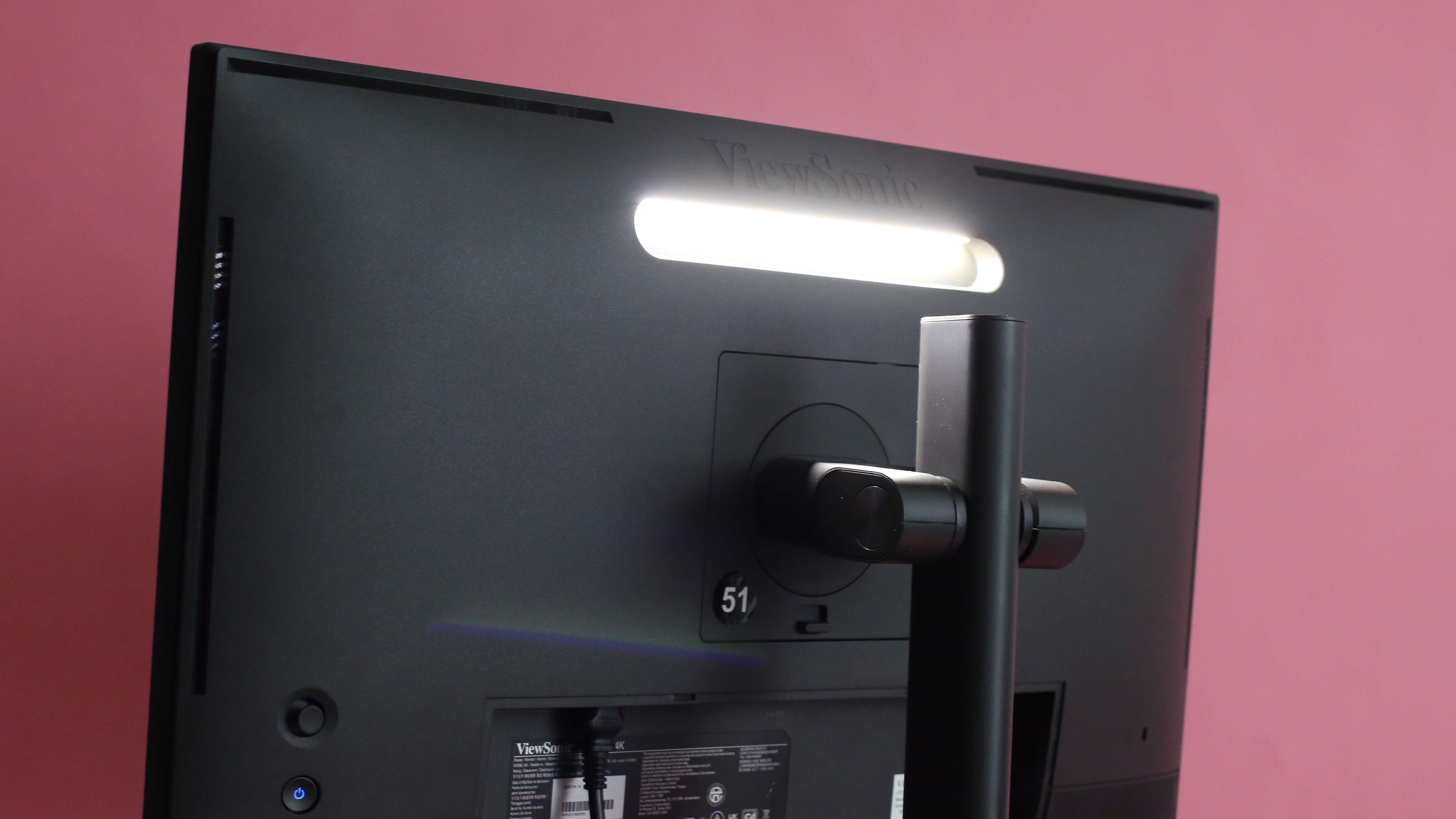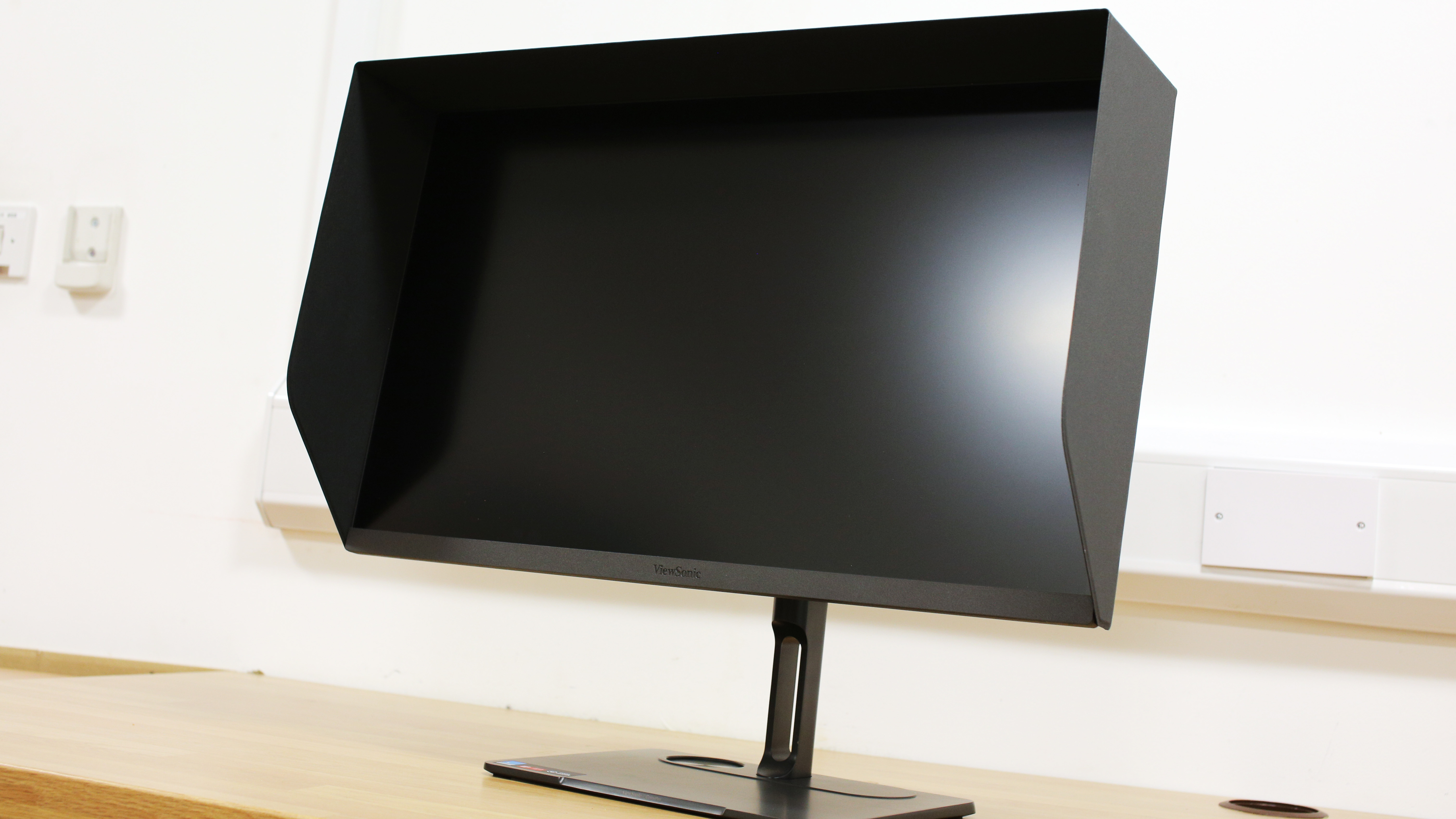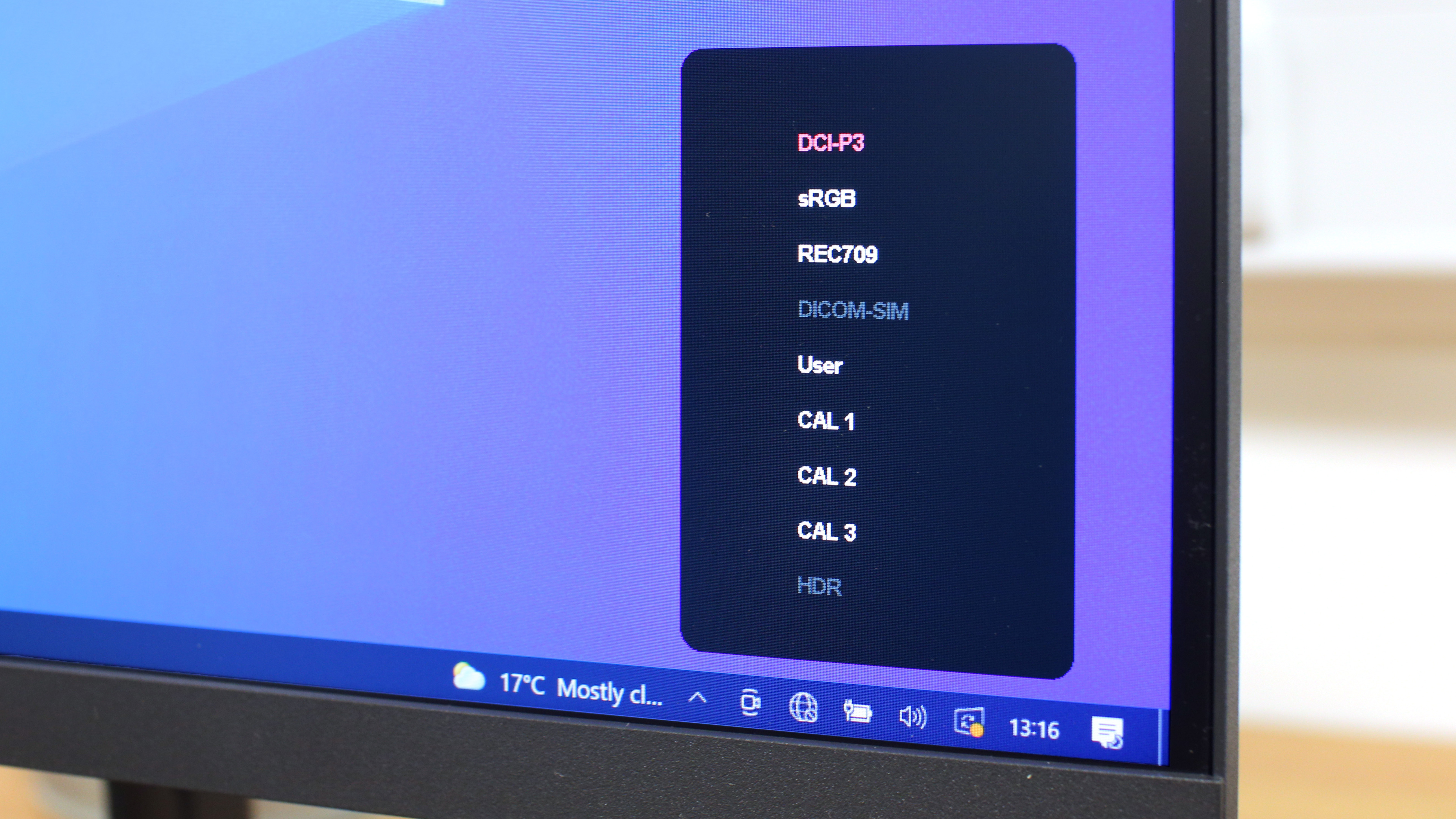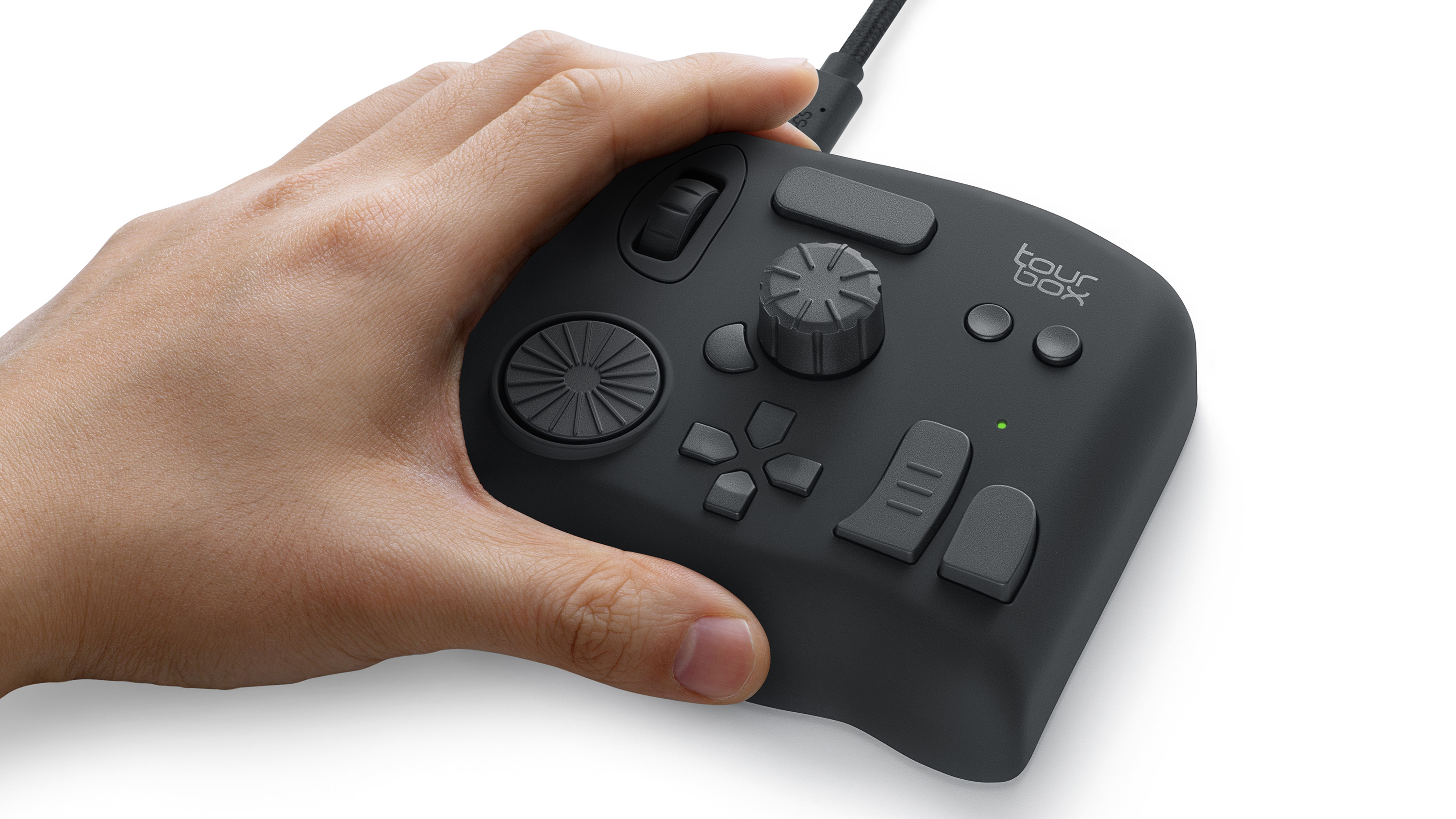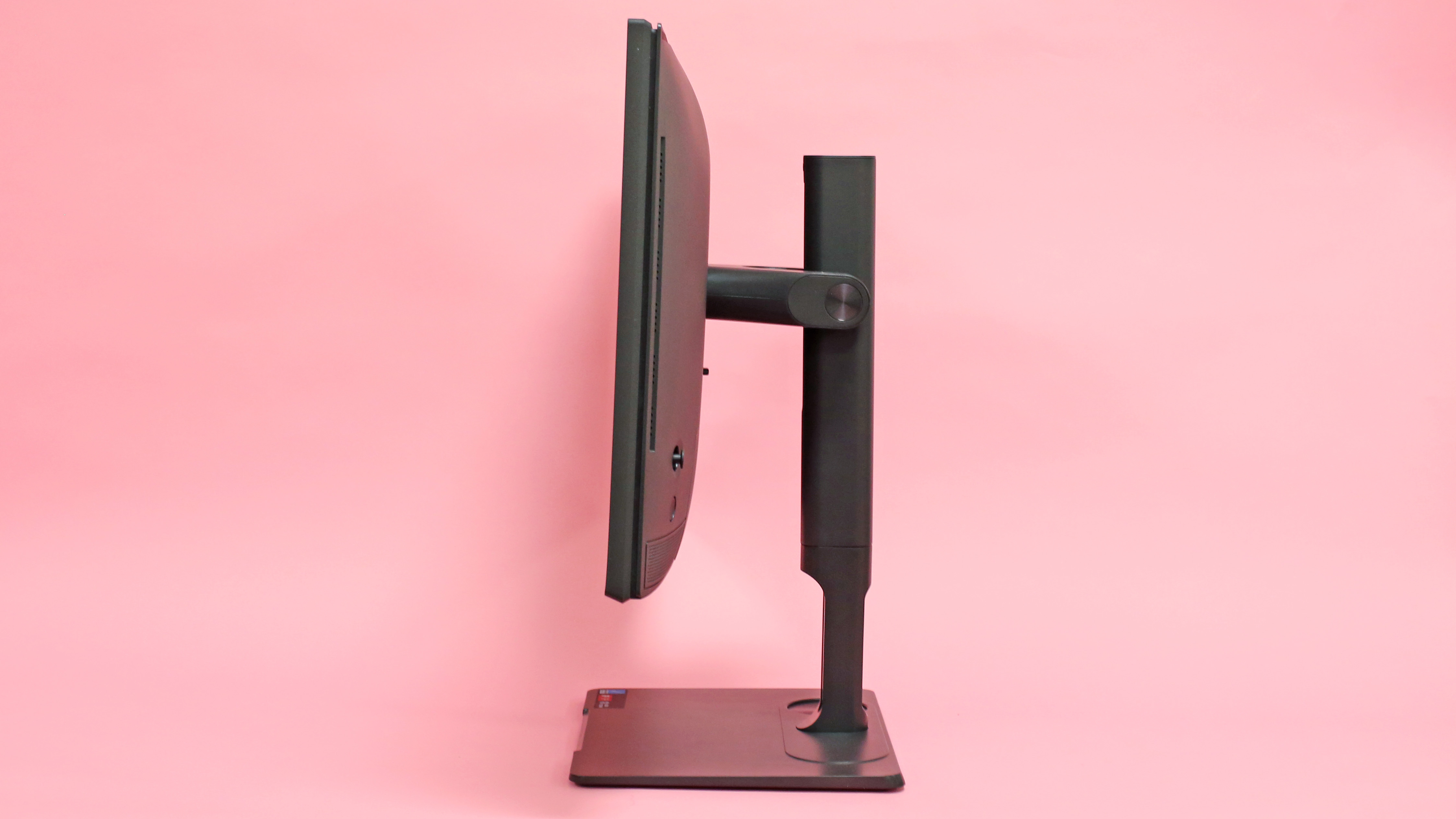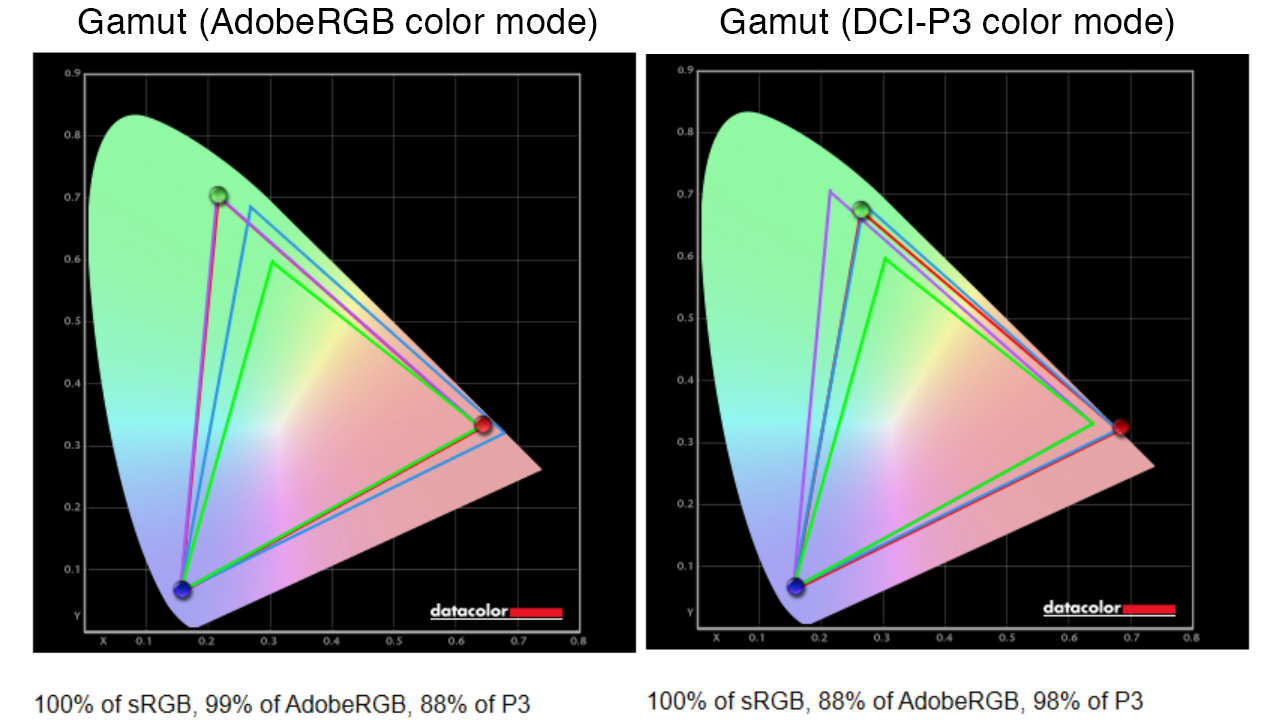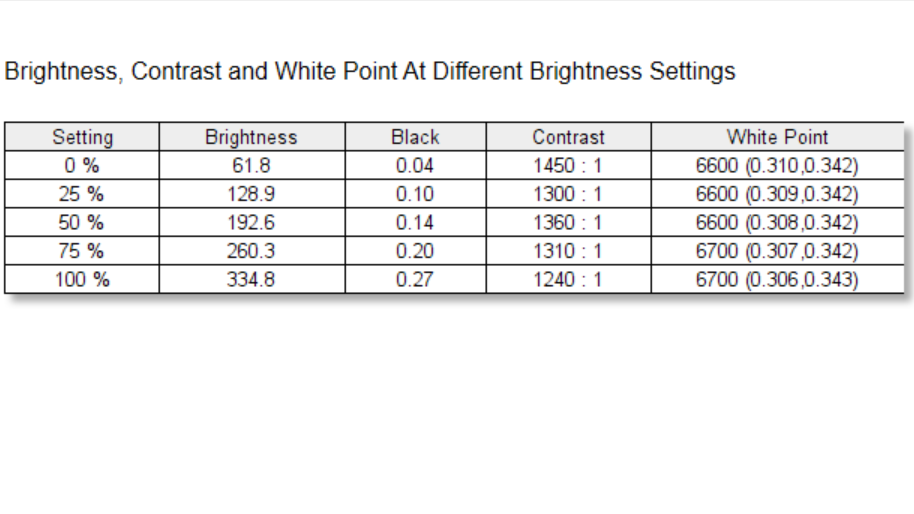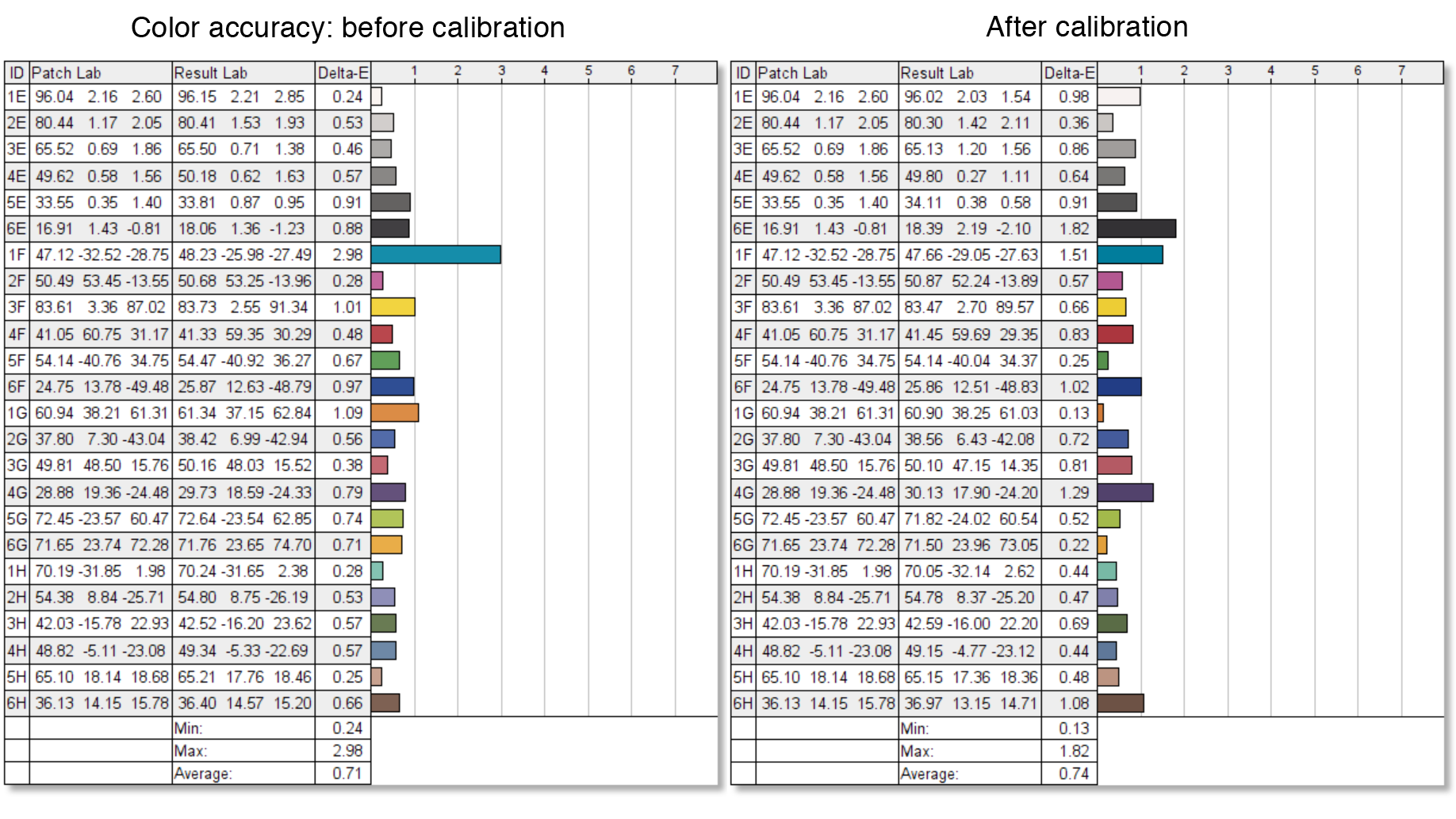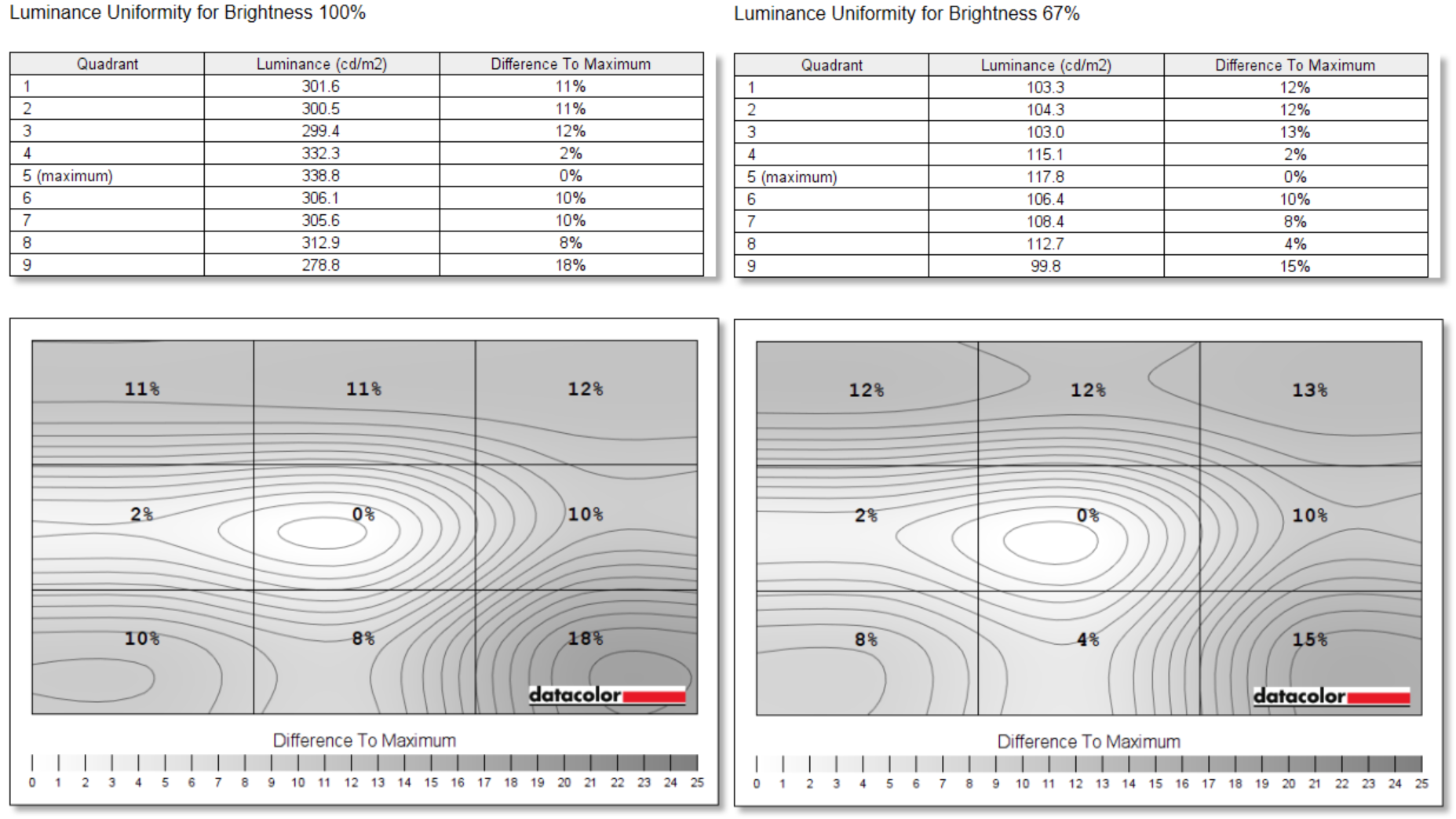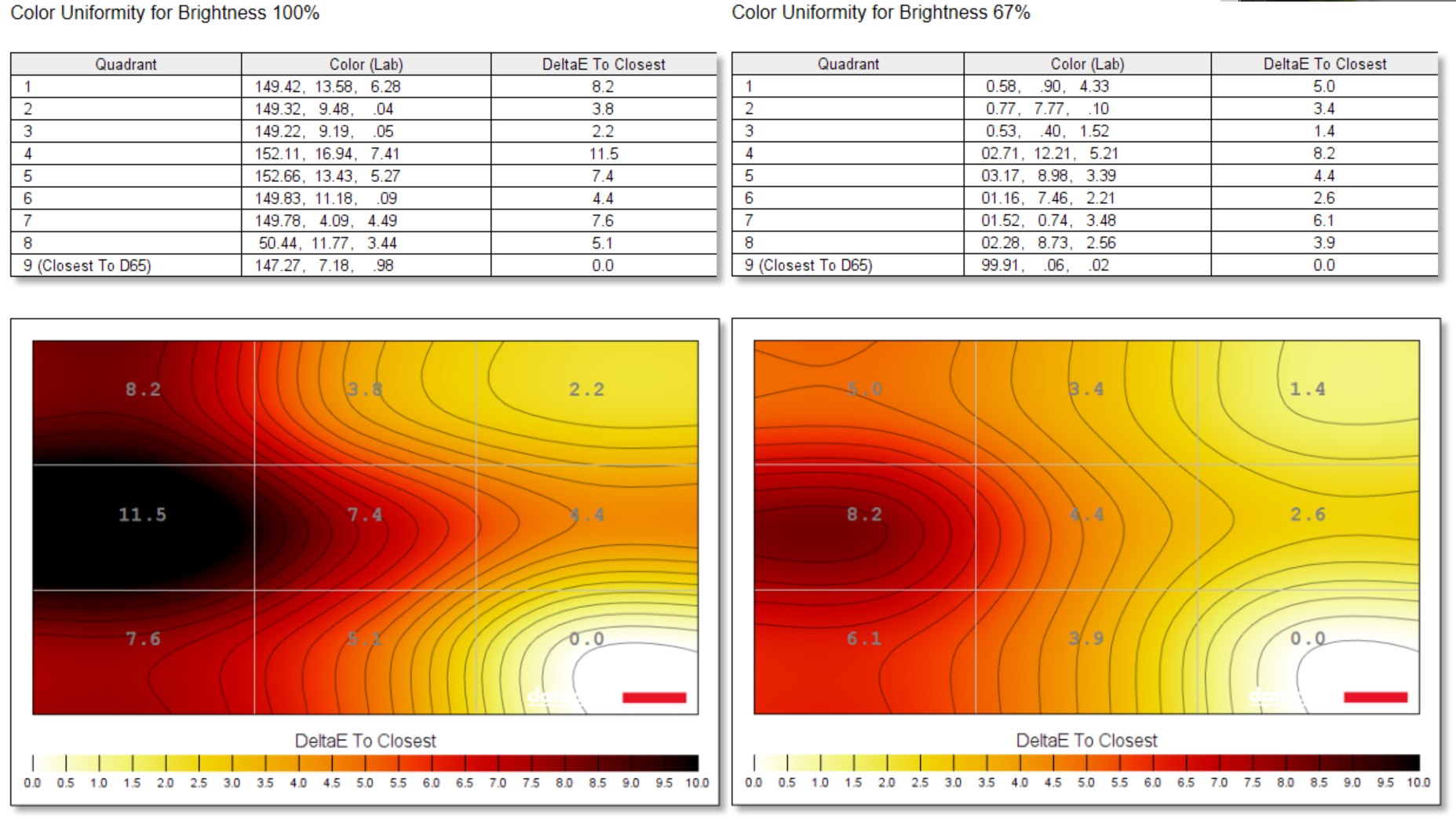Digital Camera World Verdict
The ViewSonic ColorPro VP2786-4K is a stunning screen for creatives and imaging enthusiasts Not only does it offer top-line screen specs, including excellent coverage of even wide color gamuts and a razor-sharp 4K resolution, you also get superb color accuracy as well as factory color calibration. Inclusions like the versatile ColorPro wheel remote controller, rear-facing backlight and shading hood are also welcome. The only noteworthy downside here is the somewhat disappointing brightness and color uniformity across the screen area, though this is hard to spot with the naked eye. Otherwise, the VP2786-4K is a great choice for videographers working with 4K footage.
Pros
- +
Excellent color space coverage
- +
Superb color accuracy
- +
USB-C with Power Delivery
- +
Lots of useful features
Cons
- -
Brightness & color uniformity not great
Why you can trust Digital Camera World
In July 2022 we reviewed Viewsonic's excellent ColorPro VP2776 and found it to be a superb monitor for creatives and imaging enthusiasts. It wasn't quite perfect though - a sub-4K (2560 x 1440, QHD) resolution) was disappointing when 4K monitors are now becoming the norm, and it's coverage of the Adobe RGB color space was relatively poor. However, it seems someone at Viewsonic took note of our criticisms and now we have a new, improved revision, the ColorPro VP2786-4K.
Specifications
Display area: 27 inches
Aspect: 16:9
Panel type: IPS
Panel bit depth: 10-bit
Display colors: 1.07 billion
Resolution: 3840 x 2160
Pixel density: 163 ppi
Refresh rate: 60Hz
Response time: 5ms
Brightness: 350 cd/m2
Contrast ratio: 1300:1
Color space coverage: 100% sRGB, 100% Adobe RGB, 100% Rec 709, 98% DCI-P3
Video inputs: HDMI x2, USB-C (DP Alt Mode), DisplayPort
Outwardly the VP2776 and '86 look almost identical, and they share many of the same features. What's likely happened here is ViewSonic has simply swapped out the QHD panel in the VP2776 for a 4K LCD, retaining the existing design and extra features. The only significant differences are as follows:
| Header Cell - Column 0 | VP2776 | VP2786-4K |
|---|---|---|
| Resolution | 2560x1440 | 3840x2160 |
| Brightness | 400 cd/m2 | 350 cd/m2 |
| Contrast ratio | 1000:1 | 1300:1 |
| Refresh rate | 165Hz | 60Hz |
| Adobe RGB coverage | 87% | 100% |
| DCI-P3 coverage | 95% | 98% |
As you can see, though the VP2786 does give you extra resolution, better color space coverage and an improved contrast ratio, there are some compromises to be made: brightness is reduced, as is refresh rate.
Key features
So with the increased resolution and Adobe RGB color space coverage, Viewsonic has in one fell swoop addressed the only significant shortcomings with the VP2776. Elsewhere, the VP2776's most compelling features are carried over to the new model, including factory color calibration, HDR, USB Type-C connectivity with Power Delivery, and even an included remote control dial and a detachable shading hood.
As with the VP2776, color space coverage and accuracy are major focusses, with the VP2786 covering an even larger gamut. You get 100% sRGB, 100% Adobe RGB, 100% Rec 709, and 98% DCI-P3 coverage - in other words, some of the highest coverage figures you'll find, period. Each monitor is also factory calibrated to display color to an accuracy of Delta-E <2. Not only this, but ViewSonic's Uniformity Correction feature promises to balance luminance (brightness) variance to < 5% across the display area, thereby eliminating any noticeable bright or dim spots.
A 350cd/m2 maximum brightness isn't quite a match for the 400cd/m2 of the VP2776, but it's more than enough for everyday use, and earns the VP2786 HDR10 status for displaying HDR content.
The best camera deals, reviews, product advice, and unmissable photography news, direct to your inbox!
But the VP2786 doesn't just stop with color-control features. It's also USB Type-C capable, passing through a generous 90W of power to an attached laptop.
When you buy a VP2786, you don't just get a monitor. ViewSonic also includes a ColorPro Wheel. Not only can this conveniently adjust the monitor's display settings, it can also be used as a very handy clickable control dial for compatible software like Adobe Creative Suite and Capture One. And its versatility doesn't end there: the ColorPro Wheel even doubles as a colorimeter, enabling it to calibrate the monitor in much the same way as a third-party color calibration device from DataColor or X-Rite.
Build & handling
With its gunmetal grey exterior and fairly restrained design, the VP2786 may first appear a little bland, but that's not the full story. The stand's base and vertical upright are both beautifully-machined all-metal items, not just a basic metal structure clad in matte plastic, as you'd find with most rival monitors. Though the hinge assembly that links the display panel to the stand's upright is clad in plastic, the overall design is something special, and it enables a generous 130mm of height adjustment, 120º of swivel, -3º / 21º tilt and 90º / 90º pivot movement.
The stand isn't the only ergonomic aspect of the VP2786. Just above the stand, on the rear of the display itself, is a backward-facing LED strip light which can be configured to glow white, warm white or yellow. The effect is to add a soft glowing light behind the monitor, which if positioned in front of a white wall reflects of it and serves to reduce the glare coming from the screen itself when you're working in dim ambient lighting.
Conversely, if you're working in strong, directional ambient lighting, ViewSonic includes a simple but effective folding hood shade that effortlessly and securely attaches to the monitor with the aid of concealed magnets. Compared to some build-it-yourself plastic hood attachments, the VP2786's hood implementation is really neat.
But the star of the show is arguably the ColorPro Wheel. This superficially resembles the 'Hotkey Puck' included with competing BenQ AQCOLOR monitors, in that it's a control dial that sits on your desk. It can be used to navigate through the monitor's OSD and menu settings more easily than using the joystick control on the monitor itself. But considering the latter is already easy enough to use, the ColorPro Wheel isn't exactly essential for OSD navigation.
Fortunately, it can do a lot more. You can also use the wheel to adjust settings and move sliders in Adobe Creative Suite applications, as well as Capture One. Using the wheel in your left hand and the mouse in your right, it's possible to get a taste of image/video editing with a specialist console like a TourBox (image below) or Loupedeck panel.
The ColorPro Wheel can even be used to calibrate the monitor itself. An embedded, lens-based color sensor in the base means it'll function like a typical monitor calibrator, by resting the wheel on the display surface so it can detect the screen's color accuracy. For the sake of testing consistency, we stuck to our usual DataColor Spyder X Elite calibrator for our lab testing, but if you don't already have a monitor calibrator, then the ColorPro wheel is another very handy included extra.
Performance
The ViewSonic VP2786 impresses straight out of the box, with its respectable brightness and contrast helping produce a vibrant, punchy image in the default picture mode. Thanks to the IPS LCD screen tech, color and contrast doesn't noticeably shift depending on your viewing angle. What's more, the 4K resolution when spread across this 27-inch panel creates and exceptionally crisp image - you won't be able to spot individual pixels unless you almost park your nose on the screen surface.
The (slight) downside of a 4K resolution on a screen of this size means you'll have to rely on software scaling to enlarge text, icons and toolbars to a comfortable viewing size. While most modern software apps are coded to scale up without issue, the text in some older software could end up looking blurred. This is no fault of the monitor though.
But to really assess a monitor's image quality, you need more than a subjective human viewpoint. So we broke out our DataColor Spyder X Elite monitor calibrator to really put the VP2786 through its paces.
Lab results
Color gamut:
ViewsSonic claims 100% sRGB, 98% DCI-P3 and 100% AdobeRGB color space coverage, and our results are pretty much identical across the board.
Brightness and contrast:
We measured an impressive 335 cd/m2 peak brightness - not quite ViewSonic's advertised 350 cd/m2, but close enough to be acceptable . Contrast varies depending on screen brightness, though a range between 1240:1 and 1450:1, easily confirming the claimed 1300:1.
It's worth noting that while a monitor may be capable of extreme outright brightness, you generally wouldn't want to set brightness anywhere near this high for everyday use. For typical image editing, 200cd/m2 brightness is still more than enough.
Color accuracy:
ViewSonic claims the VP2776 comes pre-calibrated to a Delta-E color accuracy of <2. We found this to be quite conservative, as we recorded a superb out-of-the-box accuracy of 0.71.
After calibration, Delta-E deviance from ideal slightly increased (got worse), to 0.74, but that doesn't tell the whole story. Though the average deviance across the 24 tested screen colors was marginally worse, calibration did rectify a stong and obviously visible cyan color cast. This is evidenced by the maximum single color deviance reducing from 2.98 before calibration to 1.82 after calibration, resulting in a significantly more balanced color spectrum and better overall color accuracy.
Luminance uniformity (default):
Luminance uniformity (Uniformity Correction enabled):
Luminance uniformity simply measures the consistency of brightness across 9 screen regions. A maximum brightness deviation of 18% between the brightest and dimmest regions with the backlight set to 100% brightness sounds bad, but you'll struggle to notice this in real world use. Unfortunately, enabling the monitor's Uniformity Correction feature has little effect, barely reducing the deviation, to 17%.
Color uniformity (default):
Color uniformity (Uniformity Correction enabled):
With the monitor's Uniformity Correction feature disabled, color uniformity is disappointing. A Delta-E deviation as much as 11.5 between the most and least color accurate regions of the display is downright poor. This drops to a more acceptable Delta-E 8.2 with the screen brightness reduced to a more usable 67%, but it's still not a great result.
These are similar results to what we measured from the ColorPro VP2776, but where enabling Uniformity Correction with that monitor made a huge difference to color uniformity, the same feature is much less effective with the VP2786. Deviance does improve, from 11.5 to 10.5 at maximum brightness, and from 8.2 to 7.4 at 67% brightness, but it's hardly a miracle cure.
Verdict
The ViewSonic ColorPro VP2786-4K is a stunning screen for creatives and imaging enthusiasts Not only does it offer top-line screen specs, including excellent coverage of even wide color gamuts and a razor-sharp 4K resolution, you also get superb color accuracy as well as factory color calibration. Naturally, plenty of other premium monitors can boast such specs, but ViewSonic has done even more to set the VP2786 apart from its rivals: the inclusion of the versatile ColorPro wheel remote controller is a welcome one, as is the rear-facing backlight to reduce eye strain. Even the included shading hood has been well-designed.
In terms of image quality, to the naked eye at least, this monitor doesn't disappoint. But even the best human eye is subjective, and when assessing the VP2786's image quality with a more objective means of testing - a colorimeter - the results are more of a mixed bag. While the advertised color space coverage and color accuracy are indeed as good - if not better - than advertised, brightness and color uniformity (at least with our sample monitor) are disappointing, regardless of whether the Uniformity Correction is enabled. You're unlikely to notice this in real-world use, but it's still a pity the screen doesn't perform as well as some rivals in this area.
If you can do without 4K resolution, we'd still recommend the almost identical ColorPro VP2776 due to its superior panel uniformity. But the VP2786 is still a great choice for videographers working with 4K footage, providing you accept that the 4K upgrade does come with a few small compromises.
Read more:
The best photo editing tools and accessories
The best NAS drives
The best cameras you can buy right now
The best monitor calibrators
The best photo editing software
The best desktop computers for photo editing
The best ultrawide monitors for photo editing
Best video editing monitors
Ben is the Imaging Labs manager, responsible for all the testing on Digital Camera World and across the entire photography portfolio at Future. Whether he's in the lab testing the sharpness of new lenses, the resolution of the latest image sensors, the zoom range of monster bridge cameras or even the latest camera phones, Ben is our go-to guy for technical insight. He's also the team's man-at-arms when it comes to camera bags, filters, memory cards, and all manner of camera accessories – his lab is a bit like the Batcave of photography! With years of experience trialling and testing kit, he's a human encyclopedia of benchmarks when it comes to recommending the best buys.



